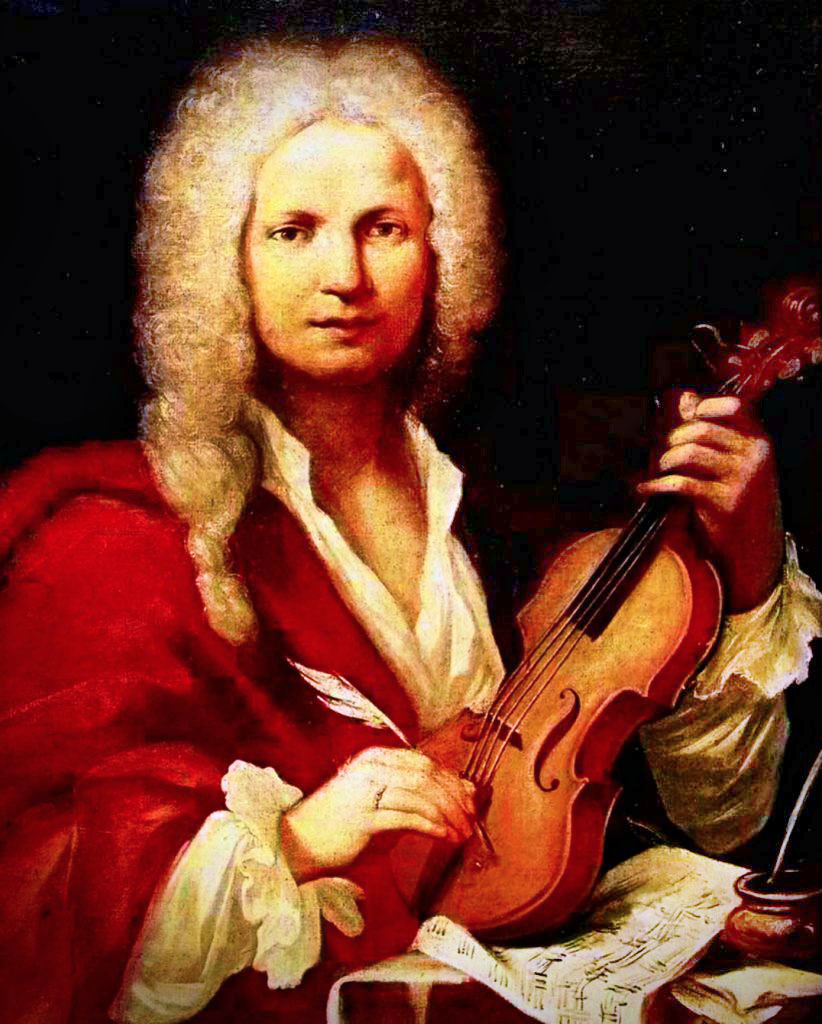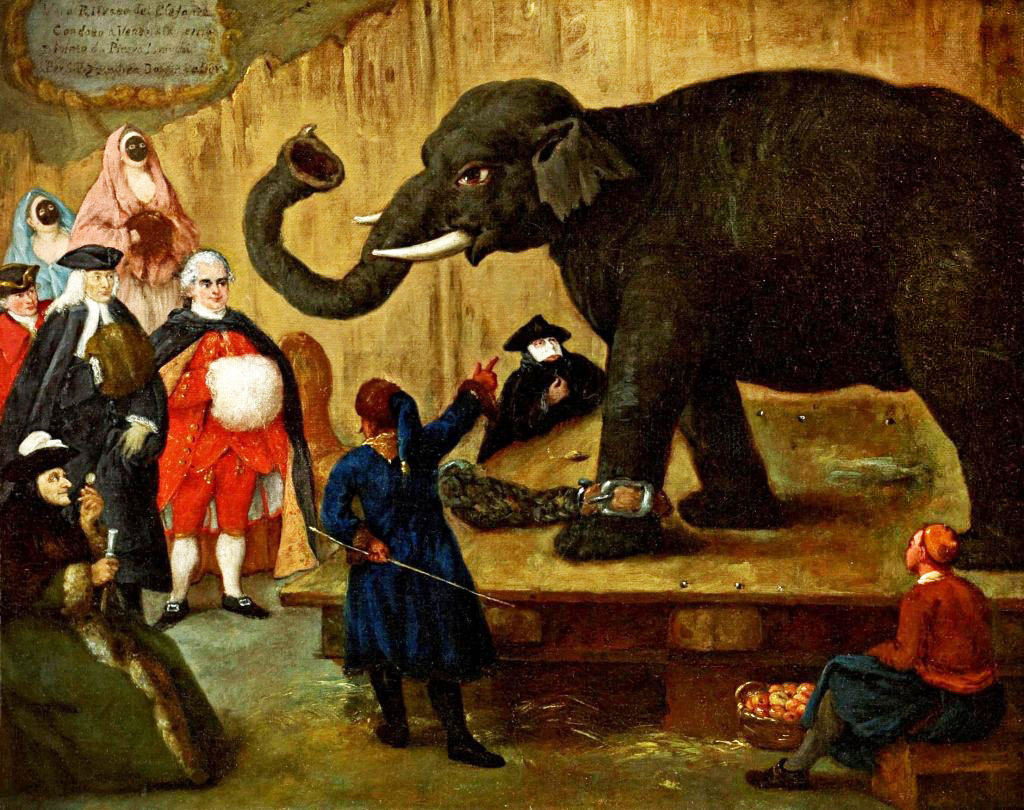With its maze of narrow streets, bridges and canals linking splendid architecture and art, Venice is a thrillingly beautiful city. Also remarkable are stories from the lagoon city, from an elephant that went to church to the city’s most famous composer.
Throughout the ages, Venetians have shown a unique talent for inventive and innovative concepts for entertainment and amusement. During the late 17th through the 19th centuries, exotic animals were very popular during Carnevale. In 1819, an elephant named Jacopo was brought in for the celebrations and was kept in the waterfront area of Riva degli Schiavoni. When the royal guests, the Emperor of Austria, Francis I and his wife were given an enthusiastic artillery salute, the blasts were so powerful that some of the adjacent buildings facades were damaged. But the cacophonous noise also agitated the massive pachyderm and Jacopo became uncontrollable. It was swiftly decided to take the elephant out of Venice if a suitable boat was found, but the water was unusually rough. After four attempts to board the animal were unsuccessful, Jacopo was placed in a nearby warehouse for the night. The elephant was not happy with his accommodations and quickly broke out and began to wander the streets of Venice. He is reported to have stopped at numerous markets to eat fruit. Jacopo walked toward Calle del Dose, across Campo della Bragora and up Salizada Sant’Antonin and then into a nearby church. By this point, soldiers were in pursuit. The weight of the elephant caused a tombstone on the floor to buckle, trapping the beast. It was there that he met his demise at the hands of the military contingent. Jacopo actually lived on, in a sense; he was stuffed and displayed for many years at the Natural History Museum in Padua.
It is a pity that the Red Priest of Venice was not around at that time. His music might have entertained Jacopo on his last journey. Antonio Vivaldi, who lived from 1678 – 1741 was nicknamed “the Red Priest” due to his fiery red hair. He was born in Venice and began studying for the priesthood at age 15. A lifelong sufferer of asthma, he did not perform Masses regularly, but his passion for music more than made up for his infrequent appearance at the altar.

In 1703, he became a violin teacher at the Ospedalle della Pietà, which was a convent, orphanage and music school in Venice. Not long after, Vivaldi began to organize young ladies into small chamber orchestras. They would become famous throughout the city, attracting visitors from all over Europe.
Vivaldi became restless in Venice and began a series of journeys, but accompanying him was the bevy of beauties. Needless to say, the man of the cloth was followed by as much gossip about his singers as acclaim for his operas. These rumors continued until his death. Although no evidence was ever presented that there was anything inappropriate in his relationship with the operatic singers, in Ferrara in 1737, the clerical authorities tried to ban them from appearing. Given his devotion to the Church, the rumors were quite likely false.
Venice is a city where many paths and destinies can cross. At first glance, many would think that Antonio Foscarini (ca. 1570 – 1622) would have led a fortunate life. He belonged to the Venetian nobility, had considerable wealth and was highly successful in his career. He was a Venetian Ambassador to both the Courts of King Henry IV of France and James I of England. However, in 1615, he was called back to Venice where he was accused of treason by his secretary. While the charge was being examined, Foscarini remained in prison for three years. Finally it was determined that he was not guilty. He was released from prison and restored to his seat in the Senate. Four years later, two Inquisitors accused Foscarini of treason. He was arrested again and swiftly convicted and executed. Six months after the trial, it was determined he was not guilty, but it was too late. Foscarini never defended himself against the accusations and the reason only became clear after his death. The location where he supposedly gave up secrets about the Venetian Republic was in the house of the Countess of Arundel, wife of the Earl of Arundel. It was while carrying on an affair with the Countess that the accusations arose. Always a gentleman, he took his secrets to his grave, rather than dishonor the Countess.





